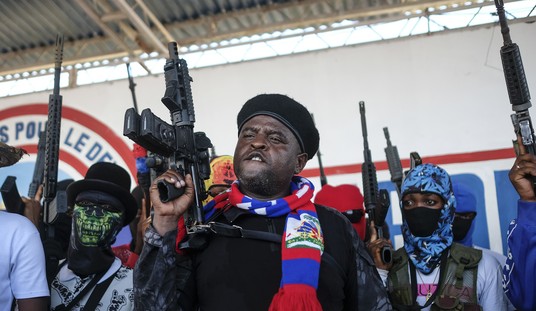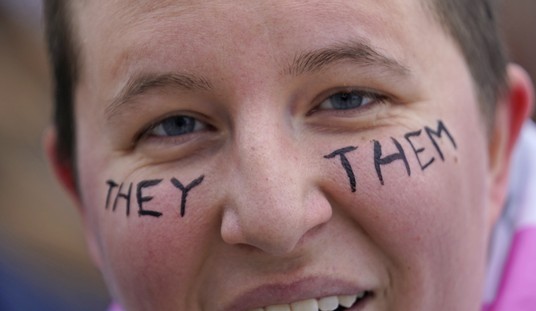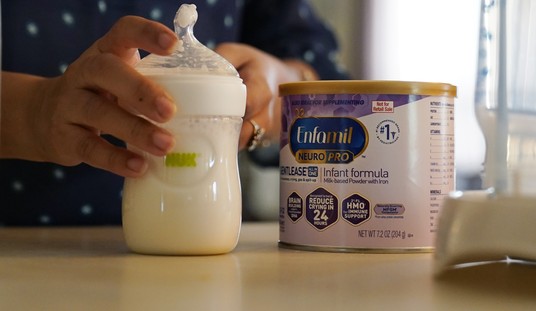After a series of controversial police shootings, public outrage and pressure from elected officials resulted in the widespread adoption of body cameras for patrol officers. The intention was to allow for an objective review of the circumstances for all complaints about police, and in some cases the policies have worked as intended. It helps, however, to have the cameras turned on — and no one’s quite sure why the body cams for two police officers in a Minneapolis shooting stayed off even after the shooting that took an unarmed woman’s life. Three days later, everyone — even the police — are still searching for answers to that question:
[A]ccording to experts, there’s no reason the officers’ body cameras should not have been switched on when they approached Damond’s home.
“The policy requires [Minneapolis police officers] to turn the camera on prior to use of force, and it goes on to say if it’s not turned on prior to force, it should be activated as soon as it is safe to do so,” said Teresa Nelson, interim executive director for the American Civil Liberties Union of Minnesota.
“So we have two officers who, after using deadly force — taking someone’s life — didn’t activate their cameras,” Nelson told NBC News. “That’s astounding to me.”
The department’s policy states that a body camera should be turned on for situations as minimal as traffic stops and for incidents as serious as use of force as long as it is safe to do so. The policy also states that if cameras are not turned on before an incident use of force, they should be turned on afterward.
While that may seem like a classic case of asking to close the barn door after the horse has bolted, it makes a difference with police body cams. The devices are never turned entirely off; they record a continuous 30-second loop until activated. This allows for an immediate activation to capture at least some of what preceded it. Had one or both officers activated the cameras immediately after the shooting, there may have been some record of what led to the decision to use deadly force.
Sadly, a Minneapolis city council subcommittee had planned to look into police compliance with body-cam policies soon after the local ABC affiliate had reported that officers often neglected to properly activate them:
Blong Yang, chairman of the Minneapolis City Council’s Public Safety Committee, said that it would likely take a closer look at the department’s body camera program at its meeting next week.
Members’ attention was drawn by a KSTP report last week that said Minneapolis officers don’t turn on their cameras as often as they should. The lack of bodycam footage of Saturday’s shooting was also troubling, Yang said.
“It’s concerning that the bodycams weren’t on,” he said.
Media reports identified the shooting officer as Mohammed Noor, a second-year member of the force, and at one time a celebrated addition to the Minneapolis PD as one of the few Somalis on the force. His partner on Saturday night was Matthew Harrity, who had even less experience:
Sources identified Noor’s partner on the scene, who did not fire any shots, as officer Matthew Harrity, 25, who earned his peace officer’s license last year. A spokeswoman for the BCA confirmed there was no weapon found at the scene, creating even more mystery about how Damond’s call to police ended in one of the responding officers fatally shooting her. …
Just before 11:30 p.m. Saturday, Damond, 40, called 911 to report a possible assault occurring in an alley near her home between Washburn and Xerxes avenues S., in the Fulton neighborhood.
Damond, in her pajamas, went to the driver’s side door of the responding squad and was talking to the officer, according to three sources with direct knowledge of the case.
Moments later, Noor shot across his partner from the passenger’s seat, killing Damond.
Is it normal practice to partner a rookie (or close to it) with an officer with just a couple of years of experience on patrol? Maybe it is, but it seems curious; it would be interesting to hear from LEOs as to what their own experience in partnering has been. This might be a lesser question in relation to the body-cam compliance, perhaps even more so because it was the more experienced officer who fired the shot at the unarmed woman. Still, the pairing of two officers with lower levels of experience seems like a decision worth reviewing, too.
The state’s Bureau of Criminal Apprehension, which is investigating the shooting itself, has referred questions about body-cam policies and compliance to the Minneapolis PD. The latter’s Internal Affairs division will conduct a separate review of the actions of Noor and Harrity in regard to their body cams, unless public pressure forces the MPD to ask for an independent investigation. The BCA will almost certainly have to delve into it as well, because that mystery is almost certainly tied to the mystery of why Justine Damond was shot at all. Technology offers us amazing capabilities for transparency in law enforcement, but it only works when officers turn on the equipment — and the failure to do so seems very suspicious in that context.








Join the conversation as a VIP Member